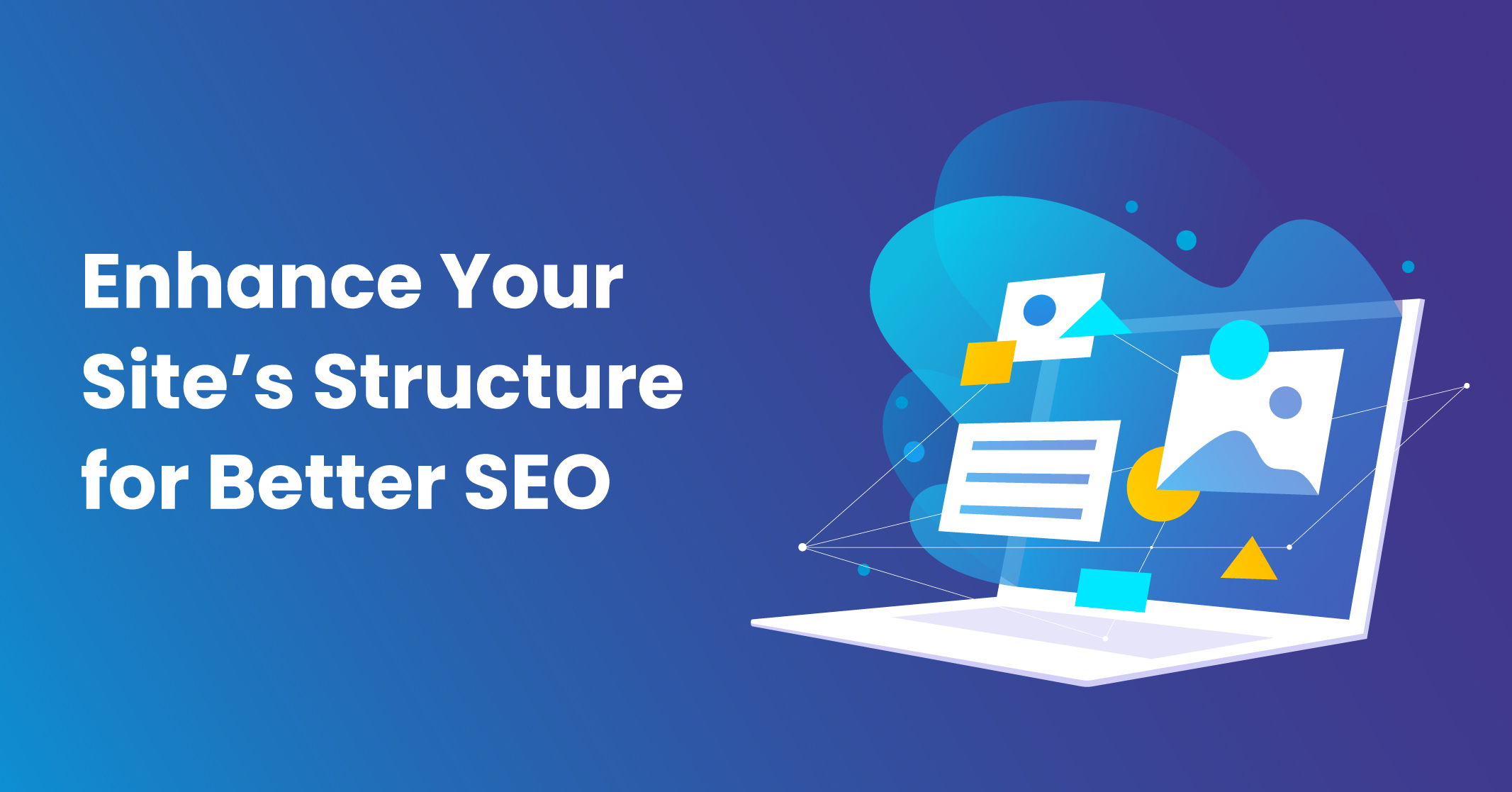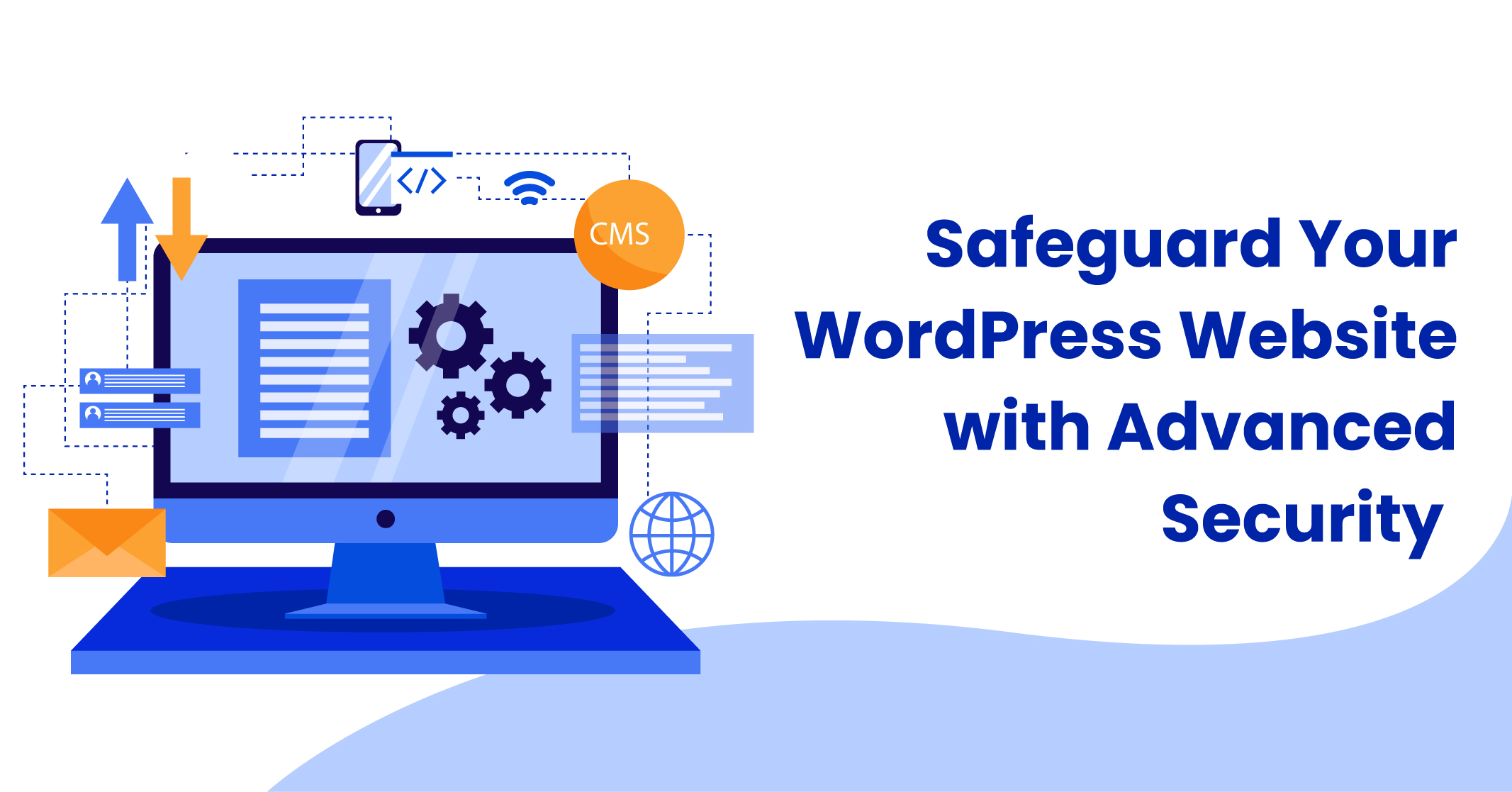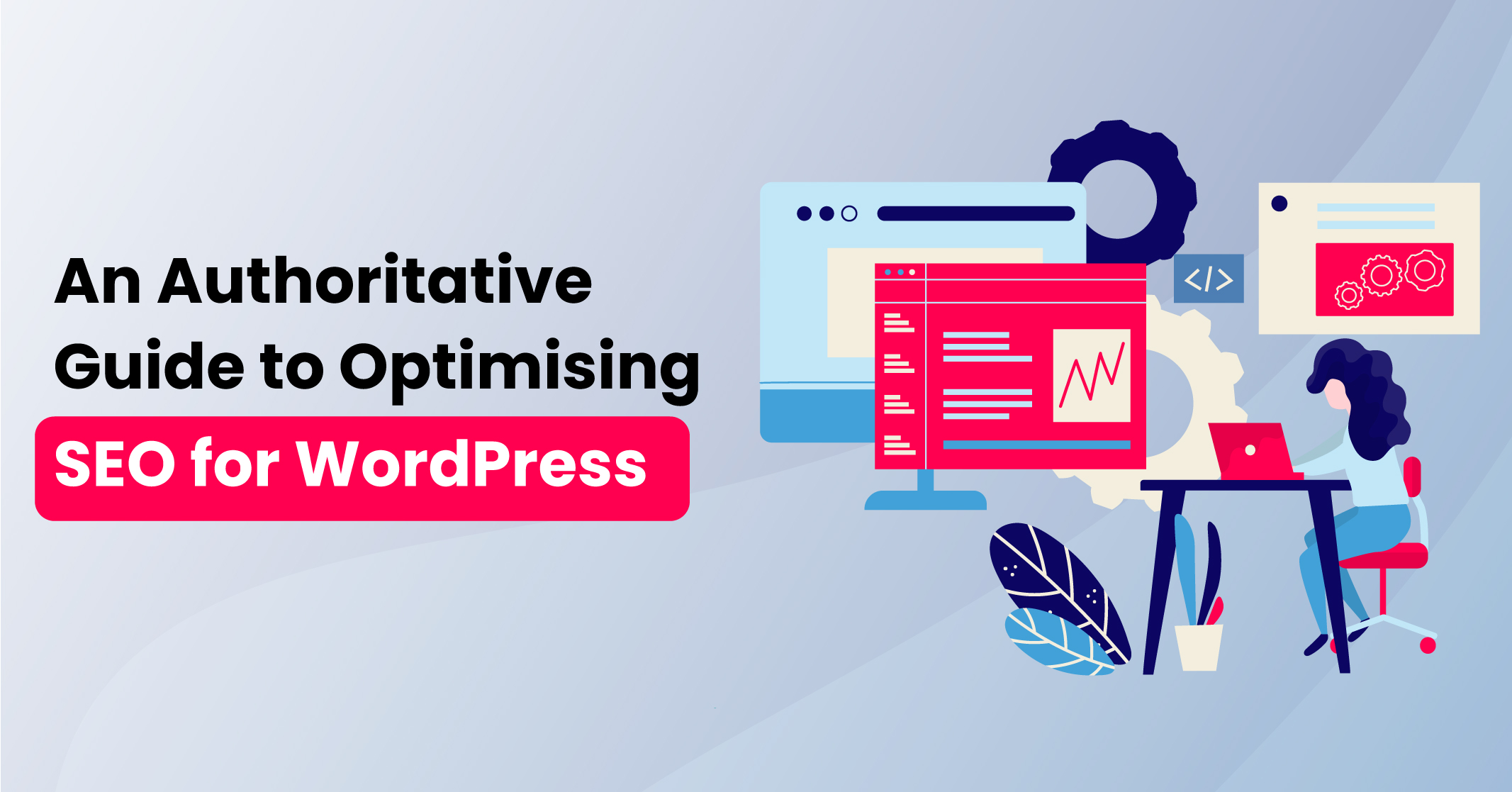An Authoritative Guide to Optimising SEO for WordPress
WordPress is renowned for its SEO capabilities, but there’s always room for improvement. By focusing on WordPress SEO, you can take your website to the next level and see better results in terms of rankings, traffic and conversions.
This comprehensive guide covers all the WordPress SEO best practices and tactics to optimise your website for search engines. With so much ground to cover, feel free to use the table of contents to navigate to the sections that interest you the most.
Click Here – Free 30-Minute Strategy Session
Be quick! FREE spots are almost gone for this Month
Free Quote
By following the WordPress SEO tips in this guide, you’ll optimise your site’s content and structure, speed up your website, secure your site, cater to mobile users, analyse and improve your performance and promote your site.
Start boosting your WordPress SEO today and see the results for yourself!
Master the Essentials of WordPress SEO
What are some basic things you can do with WordPress SEO checklists to increase your chances of ranking and refine your workflow?
There are a few things you can do to optimize your WordPress SEO and refine your workflow:
- Check your site health to see where you stand. You can do this by visiting the Site Health section in WordPress or by installing the Health Check plugin. This plugin gives you technical insights that can help you improve your site.
- Check that you are using suitable hosting. According to WordPress’s technical requirements, the recommended hosting plan to run WordPress should include a modern version of PHP, MySQL or MariaDB and HTTPS support. Upgrading your hosting plan is one of the easiest improvements you can make.
- Upgrade to a recent version of PHP. Many WordPress sites still run on outdated versions of PHP, which are increasingly vulnerable to attacks. Upgrading to a modern version of PHP offers many benefits, including speed, efficiency, modern development features, security and future-proofing.
- Ensure that you’re using SSL and HTTPS. Having a valid SSL certificate installed is mandatory today, and Google has mentioned that HTTPS is a ranking signal. Many modern site speed and performance techniques require a valid SSL/HTTPS setup.
- Check your site settings, including your visibility settings in Settings → Reading, and ensure that your Writing and Reading settings are all set correctly.
Learn More: The Complete Technical and On Page SEO Checklist
Maximise the Impact of Your Content with Optimisation
Some tips for optimising content on a WordPress site for SEO:
- Research what your users want and need: Understand the search terms your audience uses and the intent behind their searches to create content that addresses their needs.
- Write great content for your users: Create high-quality, engaging and well-structured content.
- Optimise individual posts and pages: Pay attention to elements such as focus keywords, permalinks, page titles, headings and meta descriptions.
- Maintain content quality: Regularly update and revise content, especially cornerstone content, to keep it fresh and relevant.
- Avoid keyword cannibalisation: Don’t create too many articles for the same or similar keywords, as this can cannibalise your rankings.
Learn More: Ultimate Guide to SEO Content Creation!
Enhance Your Site’s Structure for Better SEO

A well-organised site structure is essential for helping users and search engines navigate your website and understand its content.
Here are some tips for improving your site structure:
- Organise your site:
- Create a clear navigation path from your homepage to your posts and pages
- Use categories and subcategories to group your content and add a hierarchy
- Avoid cluttering your homepage with too many options
- Use a clear menu and breadcrumbs to help users navigate your site
- Connect your content with contextual internal linking:
- Link your content within your copy to create a network of related pages
- Use anchor text that accurately describes the page you’re linking to
- Ensure the number of links to a page reflects its importance
- Use an internal linking tool to suggest relevant links
- Manage your categories and tags:
- Pick several main categories and make sure they are roughly the same size
- Use tags to describe your posts in more detail but don’t use too many or repeat them
- Consider creating custom taxonomies if they group content in a helpful way
- Manage your archive pages:
- Prevent search engines from indexing archive pages that don’t make sense on your site
- Consider customising pagination to make it more helpful for users and search engines
- Configure your breadcrumbs:
- Use breadcrumbs to help users navigate your site and understand its structure
- Manage your XML sitemaps:
- Use XML sitemaps to tell search engines that your site has been updated
- Split your sitemaps into smaller bits for faster loading and indexing
Website speed is crucial for providing a positive user experience and boosting search engine optimization (SEO) rankings. Slow-loading websites can lead to frustration for users, resulting in lower engagement, fewer conversions and decreased likelihood of repeat visits or recommendations.
With Google’s Page Experience update, website speed and user experience have become even more critical factors for SEO. Therefore, it’s essential to measure and manage website performance, especially for users on mobile devices or slower internet connections.
Here are some key points to consider for measuring and improving website speed:
- Measuring website speed can be challenging due to the varying results and scores from different tools. Therefore, it’s crucial to choose the right metrics and tools to monitor and diagnose issues accurately.
- Improving website speed requires identifying and addressing bottlenecks related to hosting, themes, plugins and performance. Page speed optimization is a complex discipline that may involve various solutions depending on the website’s specific situation.
- Some common ways to improve website speed include changing hosting providers, using a content delivery network (CDN), re-assessing plugin usage and optimising the loading of CSS and JavaScript.
Overall, website speed is a critical component of SEO and user experience. By measuring and improving website performance, businesses can enhance their online presence and attract more visitors.
Learn More: Understanding the Factors That Determine How Long It Takes to See Success From SEO
Safeguard Your WordPress Website with Advanced Security

WordPress is the most widely used website management platform in the world, powering nearly 42% of the web. As a result, it is a prime target for hackers. While WordPress does offer basic security measures, there are additional steps you can take to make your website more secure.
Here are 5 easy steps to ensure WordPress website security:
- Change Your Login Credentials
- The default username in WordPress is “admin,” making it an easy target for hackers. Change your username to something unique.
- Use a strong password that is at least 20 characters long and consists of a combination of letters, numbers and symbols.
- Consider using a password manager to generate and store your passwords securely.
- Regularly Back Up Your Website
- Create regular backups of your website to ensure that you can quickly revert any changes, such as in the event of a hack or update gone wrong.
- There are several backup plugins available for WordPress that make this process easy.
- Harden Your Setup
- Choose a reputable hosting company for your WordPress website.
- Limit login attempts to prevent brute force attacks.
- Keep your WordPress installation, including plugins and themes, up to date to patch any security vulnerabilities.
- Only give users the permissions they need and for the duration that they need them.
- Change authentication keys and salts to protect cookies and passwords in transit.
- Ensure that your template files cannot be edited from the WordPress backend.
- Use Monitoring and Logging
- Security is an ongoing process, so it is essential to keep an eye out for any breaches and keep your website as secure as possible.
- Use plugins and tools such as WordFence, iThemes, or Sucuri to monitor files on your server.
- Keep track of file changes and logged-in users with WP Security Audit Log.
- Use Two-Factor Authentication
- Two-factor authentication adds an extra layer of security to your website login.
- There are several WordPress plugins available to make implementing two-factor authentication easy.
- By following these 5 easy steps, you can significantly improve the security of your WordPress website.
Learn More: How to Create a Website on Your Own?
Optimize Your Website for Mobile Users
Mobile devices have become the primary way people browse the internet, even when they’re at home. Therefore, website owners need to ensure their sites are optimised for mobile users. Mobile market shares surpassed desktop market shares several years ago, and website owners need to cater to most of their visitors.
One way to optimise for mobile users is to ensure the website or theme is mobile-friendly. This means links should not be too close together, buttons should be easily clickable, fonts should be consistent and not too small, and images should not be too large. Responsive design is also important, meaning the website’s design adapts to the screen size of the visitor’s device.
Website owners should prioritise what’s important to mobile users by identifying the four to six main tasks visitors perform on their websites. This could include calling the business or finding directions, for example.
Focusing on these main tasks and making them as easy as possible for visitors will improve the mobile user experience. Website owners can ask visitors for feedback or check Google Analytics for the most visited pages on their mobile website to identify these top tasks.
Learn More: The Complete Beginner’s Guide to Google Analytics
Measuring the impact of your SEO efforts is crucial for a successful campaign. Google offers two tools to help you analyse your website’s performance and identify new opportunities.
- Google Analytics tracks user behaviour on your website and provides valuable insights such as the number of visits, conversion rates, bounce rates, and more. It helps you understand how visitors interact with your website, allowing you to make data-driven decisions to improve your SEO strategy.To set up Google Analytics, create an account, add your website as a property, and insert the correct website URL. Google Analytics is free to use and provides a wealth of information that you can use to optimise your website.
- Google Search Console helps you understand how your website performs in search engine results and how visitors find you. It provides data on search queries, impression data, and clickthrough rates, helping you identify areas to improve your website’s SEO.To set up Google Search Console, add your website, verify ownership, and link it to your Google Analytics account. By using both tools together, you can gain valuable insights into your website’s performance.
- Other Useful Tools There are many other tools available to help you gain insights into your website’s performance. All-in-one SEO tools give you a comprehensive overview of your website’s performance, while more specific tools can provide in-depth data on areas such as site speed, duplicate content, keyword research, and more. Experiment with different tools to find the ones that work best for you.
Learn More: Enhance Your Online Presence with Google Search Console

Promoting your WordPress site is crucial to get people to visit your site and read your posts. Here are some ways to promote your site and grow your audience:
- Encourage engagement: Interact with your readers by writing engaging content and asking for their opinion. Respond to comments to build a relationship with your readers. Engagement also benefits your site’s SEO.
- Grow your reach: Be active on social media channels where your potential audience is present. Facebook, Instagram, Pinterest and Twitter are examples of popular social media. You can find more tips on social media strategy in our blog post.
- Build a mailing list: Invest in a newsletter to promote your blog. Let people sign up for it and send emails with your latest blog posts and other fun facts. Offer a subscribe field on your website and ensure that your newsletter is mobile-friendly.
- Amplify your content: With so many blog posts published daily, it’s becoming harder to stand out. Amplify your content by reaching new audiences beyond your organic reach. Consider advertising on social media channels or analysing what channels you already use to broaden your audience.
Key Takeaways: Improving Your WordPress SEO
This guide provides valuable tips for optimising your WordPress site for SEO. The tips cover a wide range of topics, from technical SEO to content creation and promotion. By following these tips, you can improve your site’s search engine rankings and attract more visitors to your site.
If you want to stay up to date on the latest news and trends in WordPress SEO, be sure to subscribe to the newsletter.
In addition to the tips provided in this guide, there are also WordPress SEO checklists and tutorials available to help you optimise your site. For those who may not have the time or expertise to handle their SEO, there are also SEO services available to assist with the process.
Overall, by focusing on WordPress SEO, you can improve your site’s visibility, attract more visitors and achieve your desired outcomes.







LEAVE A REPLY